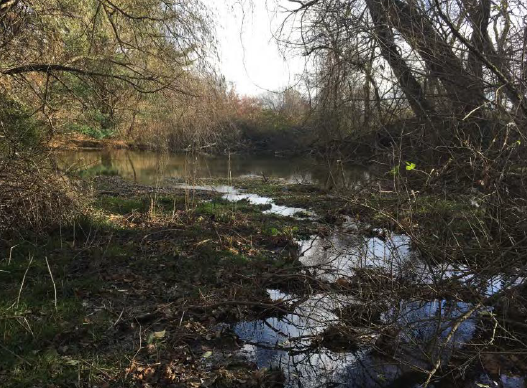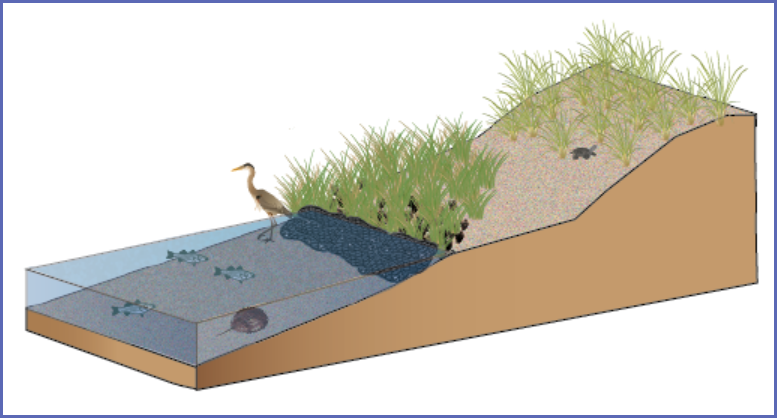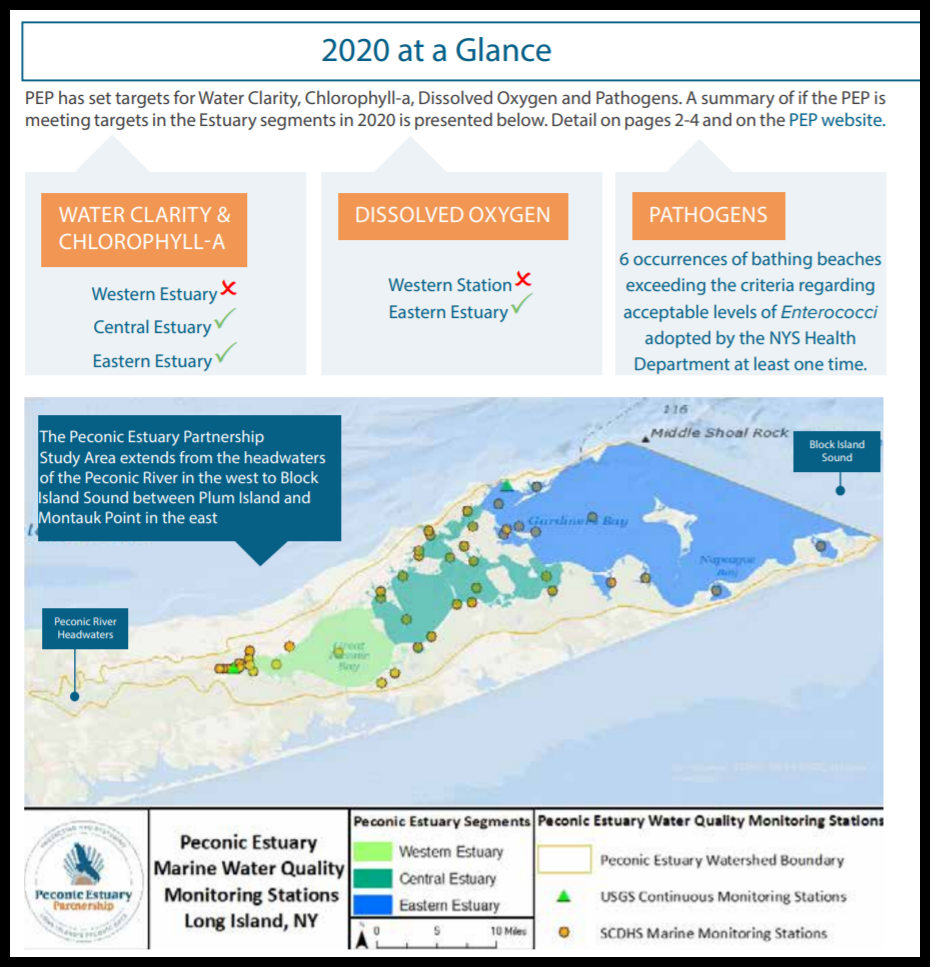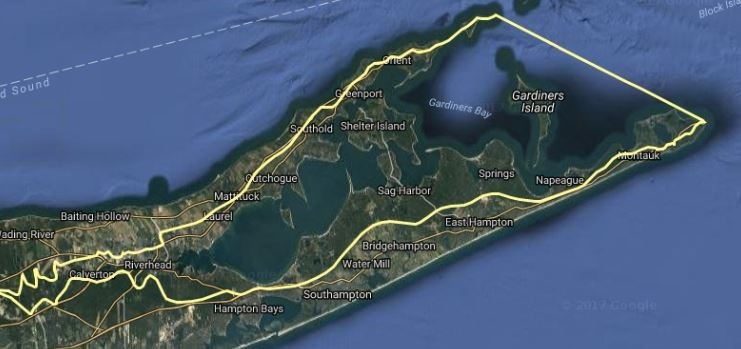Long Island Nitrogen Action Plan (LINAP) - Monthly Newsletter
The New York State Department of Environmental Conservation sent this bulletin on 07/28/2021 08:00 AM EDT |
| DEC Delivers - Information to keep you connected and informed from the NYS Department of Environmental Conservation |
| Share or view as a web page || Update preferences or unsubscribe |
Long Island Nitrogen Action Plan (LINAP) - Monthly Newsletter
|
Take the Reduce Nitrogen PledgeIf you are reading this newsletter you have an interest in reducing nitrogen in Long Island’s waters. An easy way to do your part is to take the Reduce Nitrogen Pledge. Check out 10 ways you can reduce your personal nitrogen inputs and take the pledge to be recognized as a leader in helping to combat nitrogen pollution in our community! Take the “Reduce Nitrogen Pledge” today. Homeowners Rewards ProgramThe PEP Homeowner Rewards Program continues to reimburse homeowners in the Peconic Estuary watershed for the cost of removing turf and pavements, and adding green infrastructure such as rain barrels, rain gardens and native plant gardens. Homeowners can be reimbursed up to $500. The PEP website has an interactive tool and plant database to help individuals and organizations plan eco-friendly landscaping projects that use native plants which reduce nitrogen and other sources of pollution. To learn more about the program and apply online, visit PEP's Homeowner Rewards Program webpage.
Photo Credit: PEP Stormwater Wetlands Project at Meetinghouse CreekPEP recently completed a Conceptual Habitat Restoration Design Plan for Meetinghouse Creek. Meetinghouse Creek is listed as an impaired waterbody due to low levels of dissolved oxygen caused by excessive nutrient levels. The sources of nutrients are agricultural runoff, stormwater/urban runoff, and boat pollution. The conceptual design recommends constructing a 1.2-acre stormwater wetland to treat stormwater runoff. This will improve water quality in the downstream wetland and surface water and increase the ecological quality of the habitat and improve plant and wildlife diversity. Work is scheduled to begin this year.
Photo Credit: PEP Living Shoreline ProjectPEP continues to collaborate with the Town of Southold, Suffolk County, and Cornell Cooperative Extension (CCE) to create a living shoreline demonstration project at the Suffolk County Marine Environmental Learning Center (SCMELC). The living shoreline project includes using patches of cord grass, a native plant found in coastal salt marshes, and ribbed mussels placed intermittently to allow the population to grow and spread out over the habitat available to them. The cord grass and ribbed mussels play differing roles within the environment. The cord grass’s extensive root system helps keep the sediment intact, preventing erosion, but also filters out nutrients and pollution before they enter the bays. Ribbed mussels provide resilience to the seaward edge of the marsh and improve water quality through filter-feeding. The demonstration project will be monitored to determine how effectively cord grass and ribbed mussels mitigate nitrogen pollution in the Peconic Estuary. This project will be a model for restoring and protecting the coastline by assessing how well it reduces coastal erosion, and allows natural processes to trap sediment and filter runoff, which benefit the beach and wetland habitats. The project is due to be complete this fall.
A living shoreline is a manmade shoreline that mimics a natural shoreline. Living shorelines are made of natural materials and provide wildlife habitat, as well as natural resilience to communities near the waterfront. Image Credit: PEP Water Quality Monitoring Strategy/2020 Annual Water Quality ReportThis year the PEP finalized a Water Quality Monitoring Strategy. The Strategy includes a summary of existing water quality monitoring programs and an assessment of whether data collected by those programs can adequately track and detect changes in water quality needed to assess progress towards the goals identified in the 2020 Comprehensive Conservation and Management Plan (CCMP). To ensure effective implementation of the Strategy, PEP has developed a Peconic Estuary Water Quality Monitoring Collaborative (WQMC). The Collaborative is comprised of members of the New York State Department of Environmental Conservation (NYSDEC), U.S. Geological Survey (USGS), Suffolk County, Cornell Cooperative Extension (CCE), and academic and non-profit groups. Basic information, such as the clarity of the water, amount of dissolved oxygen and levels of chlorophyll-a, and pathogen levels at beaches, provides scientists with valuable information about the health of the waterbody. The WQMC surveyed the monitoring efforts occurring and found two sources of this important monitoring data in the Peconic. The Suffolk County Department of Health Services (SCDHS) has carried out periodic water quality sampling in the Peconic Estuary since 1977. In 2012, PEP partnered with the USGS to install two Continuous Water Quality Monitoring stations in the Peconic Estuary, one in Orient Harbor and another at the mouth of the Peconic River. Together, the SCDHS and USGS monitoring systems provide sampling of the water quality conditions within the estuary. The WQMC utilized the data collected to evaluate water quality in the Estuary and produced the 2020 Annual Water Quality Report. The Report divides the Estuary into 3 sections: Western, Central, and Eastern and looks at how well each segment is meeting the targets set by PEP for water clarity, chlorophyll-a, dissolved oxygen and pathogens. Below is a snapshot of the finding of the 2020 Report. Full results from the report can be found here.
Peconic Estuary Solute Transport ModelWith funding from NYSDEC, the PEP and the USGS are close to completing a Solute Transport Model for nitrogen in the Peconic Estuary. The objective of the model is to understand historical and current nitrogen loads to the Peconic watershed. Once the model is developed, it will be used to run scenarios that will help decision makers understand how certain management actions might affect the loading into the waters. Mangers can use these results to make better informed decisions about where and how nitrogen reducing efforts might be beneficial. It will also provide realistic expectations on when improvements might be seen, as the travel time of the groundwater in some areas is decades long. The scenarios being ran for the Peconic Estuary include those which outline the recommendations from the Suffolk County Subwatersheds Wastewater Management Plan, stormwater management, fertilizer reductions, and agricultural management practices. At this time, PEP is working with USGS to finalize the scenarios. The project is expected to be complete by the end of 2021 and a final report with the findings and results is anticipated in the Spring of 2022. Concurrently, LINAP is working with the USGS to expand this model to the rest of Long Island. This will provide a wealth of information that will help guide local, state and regional management actions.
Peconic Estuary. Image credit: PEP Nitrogen Assessment ProjectPEP is in the final stages of a Nitrogen Assessment Project, which aims to compile and assess the cost, per pound, of nitrogen removal for various nitrogen reduction best management practices currently being employed throughout the country. Examples of these best management practices are: rain gardens, stormwater infiltration basins, permeable reactive barriers, replacement of on-site wastewater systems with upgraded innovative/alternative systems, and others. This project will result in a decision-making tool that can be used islandwide to determine the most cost-effective ways to reduce nitrogen on a subwatershed basis. The tool is expected it to be completed this Fall. To sign up for our LINAP Newsletter, visit the LINAP webpage or click here. Want to share this newsletter on your social media? Click the share button to connect to your Facebook, Twitter, LinkedIn, or email and let your followers know about what is happening with LINAP! |





